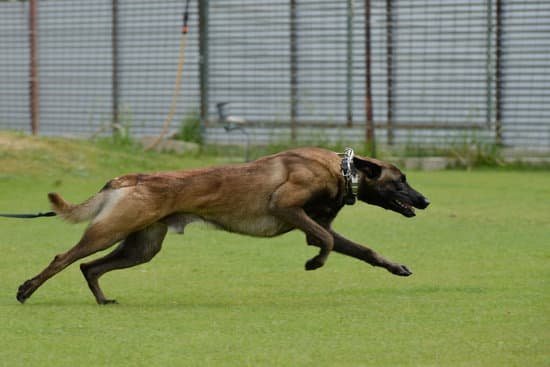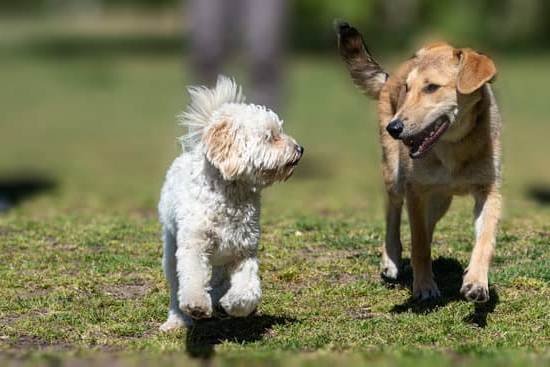Clicker training for dogs is a popular and effective method of teaching new behaviors and reinforcing positive actions in our furry friends. This form of training is based on the principles of operant conditioning, using a small handheld device that emits a clicking sound to mark desired behavior. In this article, we will explore the ins and outs of clicker training for dogs, including its benefits, techniques, misconceptions, and success stories.
Clicker training has gained widespread recognition for its ability to quickly and accurately communicate to dogs when they have performed the correct behavior. It is a powerful tool for shaping desired behaviors and creating a strong bond between pet and owner. Whether you are looking to teach your dog basic obedience commands or more advanced tricks, clicker training can be a highly effective method.
In this comprehensive guide, we will delve into the benefits of clicker training for dogs, explore the role of the clicker in training, provide a step-by-step guide to getting started with clicker training, address common misconceptions about this method, and even cover advanced techniques for seasoned trainers. By the end of this article, you will have all the information you need to successfully implement clicker training with your canine companion.
Benefits of Clicker Training for Dogs
Clicker training for dogs has been gaining popularity among pet owners and trainers due to its numerous benefits. This positive reinforcement training method utilizes a small handheld device that makes a clicking sound, which is paired with a reward, such as treats or praise, to mark desired behaviors. The benefits of clicker training for dogs are extensive and can lead to more effective and efficient training outcomes.
Here are some of the key benefits of utilizing clicker training for dogs:
- Clear Communication: The clicker provides a clear and consistent marker for the exact moment when the dog performs the desired behavior, making it easier for them to understand what they are being rewarded for.
- Accelerated Learning: Clicker training can speed up the learning process for dogs as they quickly associate the sound of the clicker with a reward, leading to faster behavior modification.
- Enhanced Focus: By using positive reinforcement, clicker training helps to improve a dog’s focus and attention during training sessions, as they become motivated by the reward associated with the click sound.
In addition to these benefits, clicker training also strengthens the bond between dogs and their owners or trainers, promotes mental stimulation, and encourages problem-solving skills. Incorporating this method into your dog’s training routine can lead to more enjoyable and successful learning experiences for both you and your furry friend.
Understanding the Clicker and Its Role in Training
Clicker training for dogs is a form of positive reinforcement training that utilizes a small handheld device, known as a clicker, to mark desired behaviors. The clicker makes a distinct clicking sound when pressed, which serves as a clear and consistent signal to your dog that they have performed the correct behavior. This method of training is highly effective because it provides instant feedback to the dog, making it easier for them to understand what is expected of them.
The clicker acts as a bridge between the desired behavior and the reward that follows. By using the clicker to pinpoint the exact moment your dog performs the desired behavior, you are able to communicate with them in a way that they can easily understand. This clear communication helps to strengthen the association between the behavior and the reward, making it more likely that your dog will repeat the desired behavior in the future.
When introducing your dog to clicker training, it’s important to establish a strong association between the clicking sound and receiving a reward. Start by pairing the click with a high-value treat or reward every time you press the clicker.
Over time, your dog will learn that the sound of the clicker means that they have done something right and that a reward is coming their way. With consistent practice, your dog will become more attentive and eager to respond to your cues when using clicker training for dogs.
- Introduce your dog to the clicker in a quiet environment with minimal distractions
- Pair each click with an immediate reward such as a small treat or verbal praise
- Consistently use the clicker during training sessions to reinforce desired behaviors
Step-by-Step Guide to Clicker Training
Clicker training for dogs is a popular and effective method of positive reinforcement training that uses a small handheld clicker device to mark desired behaviors in dogs. This section will provide a step-by-step guide to clicker training, outlining the basic principles and techniques involved in this training method.
The first step in clicker training for dogs is to introduce the clicker to your dog. Begin by associating the sound of the clicker with something positive, such as giving your dog a treat immediately after clicking the device. This helps your dog understand that the click sound means they have done something right and will be rewarded for it.
Once your dog has made the association between the click sound and receiving a reward, you can start using the clicker to train specific behaviors. For example, if you are teaching your dog to sit, wait for them to naturally perform the behavior, then immediately click and reward them. This helps reinforce the behavior and communicates to your dog what you are asking them to do.
As you progress with clicker training, it’s important to be consistent with your use of the clicker and rewards. Click and treat your dog every time they display the desired behavior, gradually phasing out treats as they become more consistent with their responses. Remember to keep training sessions short and positive, ending on a high note to keep your dog engaged and motivated.
| Clicker Training Step | Description |
|---|---|
| Introducing Clicker | Associate clicker sound with positive reinforcement like treats. |
| Training Specific Behaviors | Click and reward when dog performs desired behavior. |
| Consistency in Training | Be consistent with using the clicker and rewards during training sessions. |
Common Misconceptions About Clicker Training
Need for Treats in Clicker Training
One common misconception about clicker training for dogs is the belief that treats must be used indefinitely to reinforce the behavior. While treats are initially used as a positive reinforcement during clicker training, the ultimate goal is to fade out the treats over time. The clicker serves as a marker for the correct behavior, and once the behavior is well-established, the dog can rely more on verbal praise and occasional treats rather than continuous food rewards.
Difficulty in Timing and Coordination
Another misconception is that clicker training requires perfect timing and coordination, making it difficult for pet owners without professional training experience. However, with practice, most pet owners can develop good timing and coordination when using a clicker. The key is to ensure that the click (marker) immediately follows the desired behavior and that the treat is delivered promptly afterward. Consistency and patience are essential in mastering this aspect of clicker training.
Limited Applicability of Clicker Training
Some people believe that clicker training only works for basic obedience commands such as sit, stay, or come. However, clicker training can be applied to a wide range of behaviors and skills, including agility training, trick training, and even addressing behavioral issues such as fear or anxiety. The principles of operant conditioning underlying clicker training can be adapted to teach new behaviors or modify existing ones, making it a versatile approach to dog training.
Advanced Clicker Training Techniques
Once your dog has mastered the basics of clicker training and has demonstrated understanding of the clicker as a marker for desired behavior, you can move on to more advanced techniques. These techniques can help improve your dog’s obedience, problem-solving skills, and overall behavior.
One advanced technique is shaping, where you break down a complex behavior into smaller steps and reinforce each step until the entire behavior is achieved. This can be particularly useful for teaching tricks or more complicated obedience commands.
Another advanced clicker training technique is known as capturing, where you “capture” a naturally occurring behavior by clicking and then rewarding it. For example, if your dog naturally sits down, you can capture this behavior by using the clicker at the exact moment he sits, and then rewarding him with a treat. This can be great for reinforcing positive behaviors that your dog exhibits without prompting.
Finally, targeting is another advanced technique that involves teaching your dog to touch an object with a specific body part, such as his nose or paw. This can be helpful for agility training or simply for teaching your dog to follow more complex commands.
| Advanced Clicker Training Techniques | Benefits |
|---|---|
| Shaping | Breaks down complex behaviors into smaller steps. |
| Capturing | Reinforces naturally occurring behaviors through timing. |
| Targeting | Teaches dogs to touch objects with specific body parts. |
Troubleshooting and Problem Solving in Clicker Training
Addressing Timing and Consistency
One common issue that may arise in clicker training for dogs is timing and consistency. Timing is crucial in clicker training, as the click must immediately follow the desired behavior to effectively communicate to the dog which action is being reinforced. Inconsistent timing can lead to confusion for the dog and hinder the training process.
To address this problem, it is important for trainers to practice their timing skills and ensure that they are clicking at the precise moment the desired behavior occurs. Additionally, consistency in using the clicker and providing rewards is essential for successful training.
Dealing With Distractions
Another challenge in clicker training for dogs is dealing with distractions. Dogs, especially puppies or those that are new to clicker training, may have difficulty focusing on the task at hand when there are other stimuli present. To overcome this issue, it is recommended to start training in a quiet, familiar environment before gradually introducing distractions. Trainers can also use higher value treats or rewards to keep their dog’s attention during training sessions.
Fallback on Previous Training Methods
In some cases, trainers may experience setbacks or challenges in clicker training and feel inclined to revert to traditional training methods. It is important to resist this temptation and remain consistent with clicker training techniques.
Fallback on previous methods can confuse the dog and undermine progress made through clicker training. Instead of giving up on clicker training, it may be beneficial to seek guidance from experienced trainers or behaviorists who can provide advice on overcoming specific challenges encountered during the process.
By addressing these common troubleshooting issues and implementing effective problem-solving strategies, trainers can navigate through challenges in clicker training for dogs and work towards achieving positive results in their pet’s behavior modification and skill acquisition. Remember that patience, persistence, and a positive attitude are key components of successful clicker training for dogs.
Success Stories of Dogs Trained With Clicker Training
Over the years, many dog owners have experienced tremendous success with clicker training for dogs. One such success story is that of Luna, a playful and energetic Labrador Retriever who had a tendency to pull on her leash during walks. After struggling with traditional leash training methods, Luna’s owner decided to try clicker training for dogs.
Using positive reinforcement and the sound of the clicker to mark desirable behaviors, Luna quickly learned to walk calmly on a leash without pulling. This success story is just one example of how clicker training can make a significant difference in a dog’s behavior.
Another remarkable success story is that of Max, a rescue dog with anxiety issues. Max was often nervous around new people and had difficulty adjusting to unfamiliar environments. Through clicker training, Max’s owner was able to build his confidence and teach him to remain calm in various situations.
By using the clicker along with treats and praise, Max slowly became more at ease around strangers and was able to overcome his fear of new places. Clicker training played a crucial role in helping Max become a more well-adjusted and relaxed canine companion.
Additionally, there are countless success stories of dogs excelling in agility, obedience, and even therapy work through the use of clicker training. Dogs trained with this method have been able to achieve impressive feats and demonstrate exceptional behavior in various settings. These success stories showcase the versatility and effectiveness of clicker training for dogs, proving that it can be a valuable tool for shaping their behavior positively.
As these success stories illustrate, clicker training for dogs has proven to be a powerful technique for overcoming behavioral challenges and fostering desirable actions in our canine companions. Whether it’s addressing leash manners, anxiety issues, or excelling in specific activities, clicker training has consistently shown its ability to bring out the best in dogs through positive reinforcement and clear communication.
Clicker Training vs Traditional Training Methods
When it comes to training your dog, there are various methods and techniques that you can use. One of the most popular methods is clicker training for dogs. Clicker training is a positive reinforcement technique that uses a small device that makes a clicking sound to mark the desired behavior. In comparison, traditional training methods often rely on corrections and punishments to discourage unwanted behaviors.
One of the main benefits of clicker training for dogs is its focus on positive reinforcement. This means that your dog learns to associate the click sound with a reward, such as a treat or praise. This creates a strong motivation for your dog to repeat the behavior that earns them the click and reward, making it an effective and humane training method.
In contrast, traditional training methods may rely on punishment or corrections to deter unwanted behaviors. These methods can create fear or anxiety in some dogs, leading to stress and potential aggression.
Clicker training focuses on building trust and a strong bond between you and your dog while still achieving desired results. By using clear communication and positive reinforcement, clicker training can help improve your dog’s obedience and responsiveness in a way that traditional methods may not be able to achieve.
Recommended Resources for Clicker Training for Dogs
In conclusion, clicker training for dogs has proven to be a highly effective and rewarding method for shaping behavior and teaching new skills to our canine companions. The benefits of clicker training are numerous, including its ability to create clear communication between the dog and the trainer, its ability to motivate dogs through positive reinforcement, and its potential for creating strong bonds between dogs and their owners.
Understanding the role of the clicker in training and following a step-by-step guide can help dog owners successfully implement this method with their pets.
While there may be some common misconceptions about clicker training, such as it being time-consuming or difficult to master, many success stories of dogs trained with this method prove otherwise. Advanced clicker training techniques can further enhance a dog’s skill set and behavior, while troubleshooting tips can help address any challenges that may arise during training.
When comparing clicker training to traditional training methods, it’s clear that clicker training offers a more positive and enjoyable experience for both dogs and their owners. With recommended resources readily available for those interested in delving deeper into clicker training for dogs, such as books, online courses, and workshops, there is ample support for anyone looking to explore this effective approach to canine learning and behavior modification.
By embracing clicker training, dog owners can build a stronger relationship with their pets while achieving impressive results in terms of obedience and skill development.
Frequently Asked Questions
Is Using a Clicker Good for Dog Training?
Using a clicker for dog training can be effective because it provides a clear and distinct sound that marks the precise behavior you want to reinforce. It helps communicate to the dog when they have done something right.
How Do I Start Clicker Training My Dog?
To start clicker training your dog, first, introduce the clicker as a positive signal by associating it with treats. Then, use the clicker to mark desired behaviors and immediately follow up with a treat to reinforce the behavior.
What Does a Clicker Do to a Dog?
The clicker acts as a conditioned reinforcer for dogs, signaling to them that they have performed a desired behavior. It helps create clear communication between the trainer and the dog, making training more efficient and effective. The sound of the click also becomes associated with positive outcomes, which motivates the dog to repeat the behavior.

Welcome to the blog! I am a professional dog trainer and have been working with dogs for many years. In this blog, I will be discussing various topics related to dog training, including tips, tricks, and advice. I hope you find this information helpful and informative. Thanks for reading!





